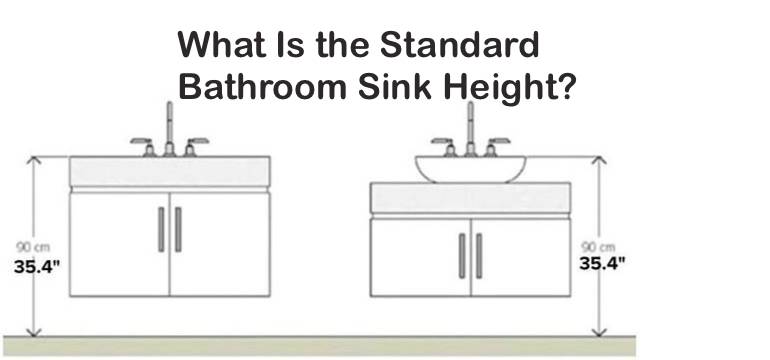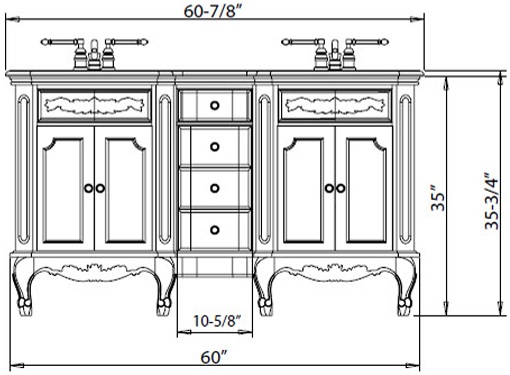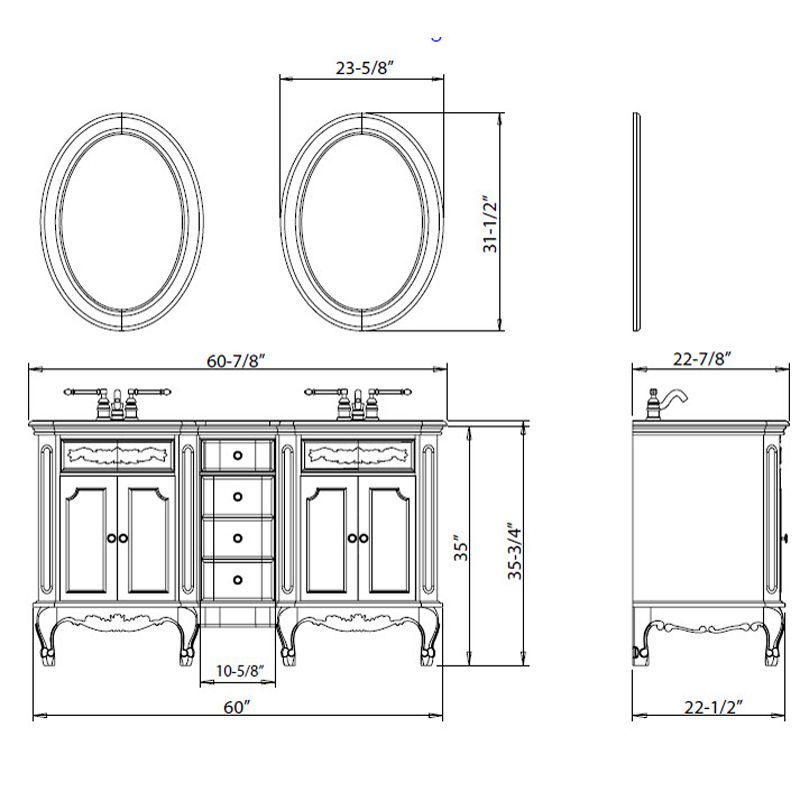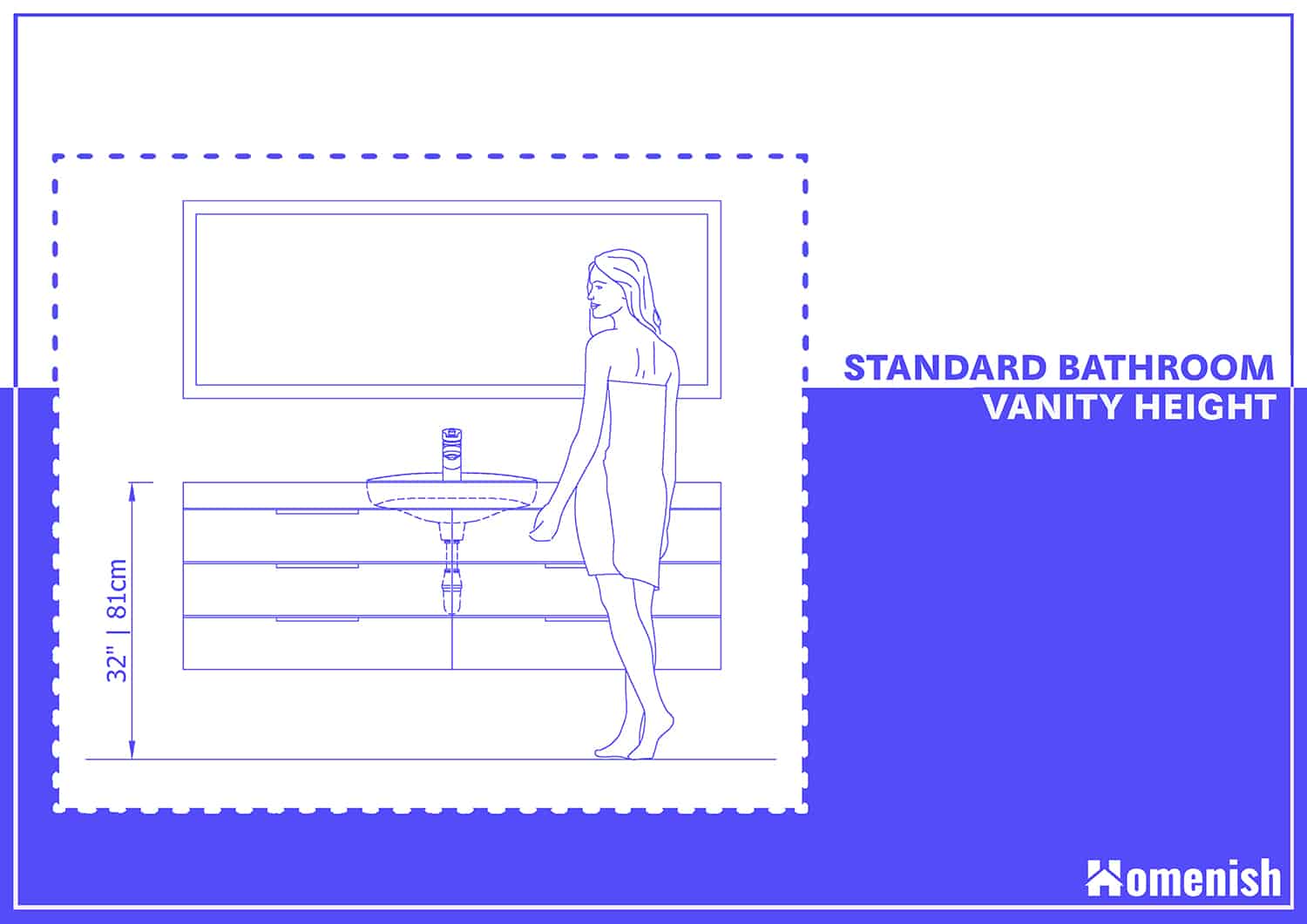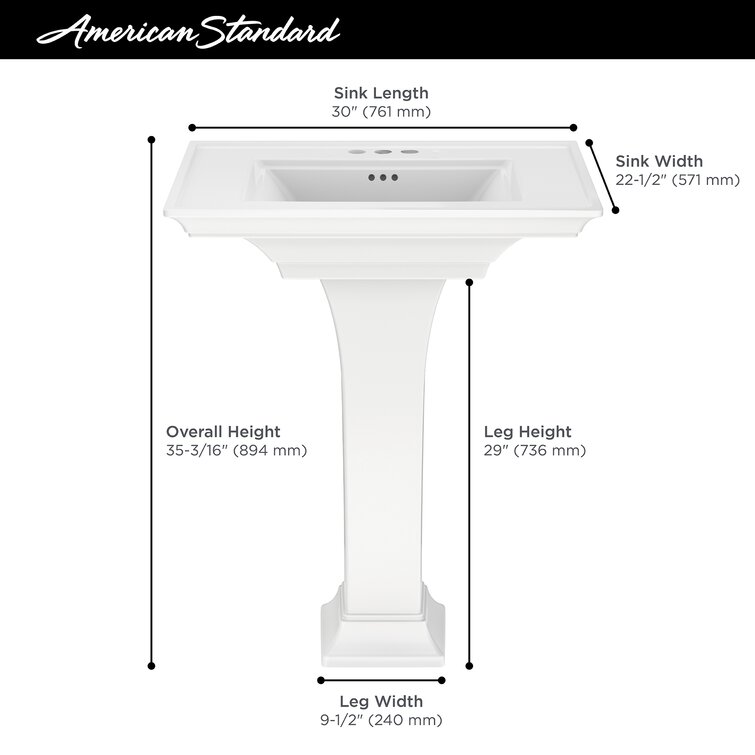Bathroom Sink Height Standard
The Importance of a Standard Bathroom Sink Height
Choosing the right bathroom sink height is an essential consideration when designing or remodeling a bathroom. The standard bathroom sink height is typically between 30 to 36 inches. Understanding the importance of this standard height ensures that the sink is ergonomically designed for comfortable use and meets accessibility requirements.
One of the main reasons for adhering to a standard bathroom sink height is to promote optimal functionality. A sink that is too low can cause strain on the back and neck, leading to discomfort and potential long-term health issues. On the other hand, a sink that is too high can be inconvenient and may require users to reach it uncomfortably.
Additionally, a standard bathroom sink height ensures accessibility for people of different heights and abilities. It is important to consider individuals with disabilities or limited mobility who may require a sink height that accommodates their needs. By adhering to the standard height, bathrooms can be more inclusive and accessible to a wider range of users.
Another factor to consider when determining the bathroom sink height is the installation of a vanity or countertop. The height of the sink should be compatible with the overall height of the vanity or countertop. This ensures a cohesive and aesthetically pleasing design, as well as functional use of the sink.
Understanding the importance of a standard bathroom sink height is crucial for creating a comfortable and accessible bathroom space. By adhering to the recommended height range, users can avoid discomfort and strain while ensuring inclusivity for individuals with various needs. Proper consideration of sink height also ensures a harmonious design with other bathroom elements such as vanities or countertops.
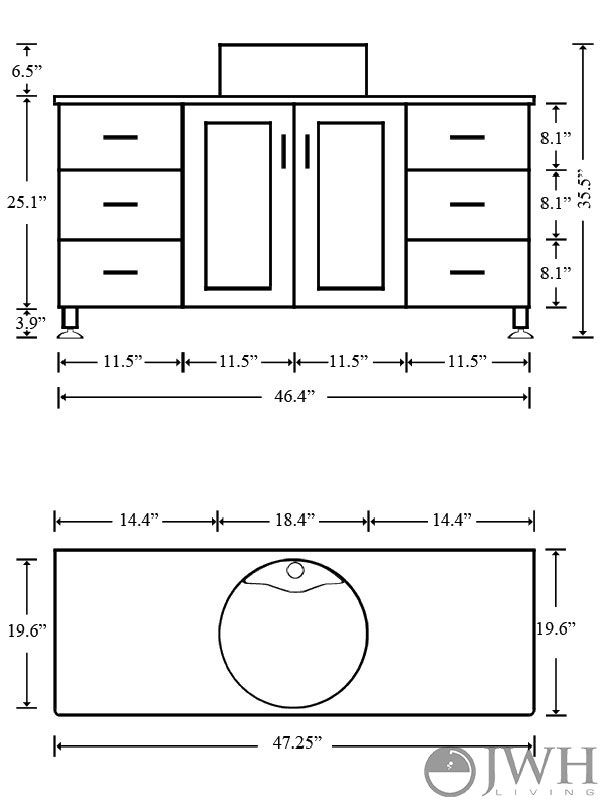
Factors to Consider When Determining the Ideal Bathroom Sink Height
When choosing the height for your bathroom sink, there are several factors to consider. The ideal height will depend on the needs and preferences of the users, as well as any specific requirements or limitations of the space. Here are some key factors to keep in mind:
- User Height: The height of the sink should be comfortable for the majority of users. Consider the average height of the people using the bathroom and ensure that the sink is at a level that allows them to use it without straining or bending too much.
- Accessibility: If the bathroom will be used by individuals with mobility issues or disabilities, it is important to choose a sink height that accommodates their needs. ADA (Americans with Disabilities Act) guidelines recommend a maximum height of 34 inches for accessible sinks.
- Children: If the bathroom will be frequently used by children, it may be beneficial to install a sink at a lower height to make it more accessible for them. A lower sink height can help children to reach the faucet and wash their hands independently.
- Countertop Height: Consider the height of the bathroom countertop when determining the sink height. The sink should be at a comfortable height in relation to the countertop to ensure ease of use and avoid any strain on the back or shoulders.
- Faucet Placement: The height of the sink should also take into account the placement of the faucet. Ensure that the faucet is at a convenient height for washing hands and face without splashing water outside of the sink.
- Personal Preference: Ultimately, personal preference plays a significant role in determining the ideal sink height. Some individuals may prefer a slightly higher or lower sink height based on their comfort and habits.
Tips for Adjusting the Bathroom Sink Height to Suit Your Needs
Measure the Standard Height: Before making any adjustments, it’s important to know the standard height for a bathroom sink. The standard height for a bathroom sink is typically around 32 to 36 inches from the floor. This height is suitable for most adults and provides comfortable access to the sink.
Consider Your Needs: If you find that the standard height does not suit your needs, it may be necessary to make adjustments. Consider your specific requirements, such as wheelchair accessibility or a height that is more comfortable for children or individuals with physical limitations.
Lowering the Sink Height: If you need to lower the sink height, you can do so by adjusting the mounting height of the sink or by installing a lower sink altogether. This can be particularly important for wheelchair accessibility or for individuals with limited mobility. Make sure to consult with a professional plumber to ensure proper installation.
Raising the Sink Height: If you need to raise the sink height, you can do so by adding a platform or installing a taller sink. This can be beneficial for individuals who are taller or have back or knee problems, as it reduces the need to bend over while using the sink. Again, consult with a professional to ensure stability and proper installation.
Consider Faucet Heights: When adjusting the sink height, it’s important to also consider the height of the faucet. Ensure that the faucet is at a comfortable reach and does not require excessive bending or stretching. Adjusting the faucet height may be necessary to achieve the desired ergonomic setup.
Seek Professional Advice: It’s always recommended to seek professional advice when making adjustments to the bathroom sink height. A plumber or bathroom designer can provide expert guidance and ensure that the adjustments are done safely and effectively.
What is the Standard Height of a Bathroom Vanity
What is the Standard Height of a Bathroom Vanity
Standard Bathroom Vanity Height – How Tall Should The Bathroom
Plan Your Bathroom By The Most Suitable Dimensions Guide
Bathroom Vanities Dimensions u0026 Drawings Dimensions.com
How Tall Are Bathroom Vanities? u2013 Sinks and Vanities
Town White Ceramic Rectangular Pedestal Bathroom Sink with Overflow
What is the Standard Height of a Bathroom Vanity Bathroom vanity
If you were wondering which is the standard height of a regular
Related Posts:
- Bathroom Sink Faucet Hose
- Mini Pedestal Bathroom Sinks
- Bathroom Sink Drain Assembly Instructions
- Japanese Style Bathroom Sink
- Bathroom Sink Storage Ideas
- Bathroom Sink Leak Repair
- Commercial Bathroom Sink Countertop
- Creative Bathroom Sink Ideas
- Kohler Bathroom Sink Drain Parts
- Rustic Bathroom Sink Bowls
